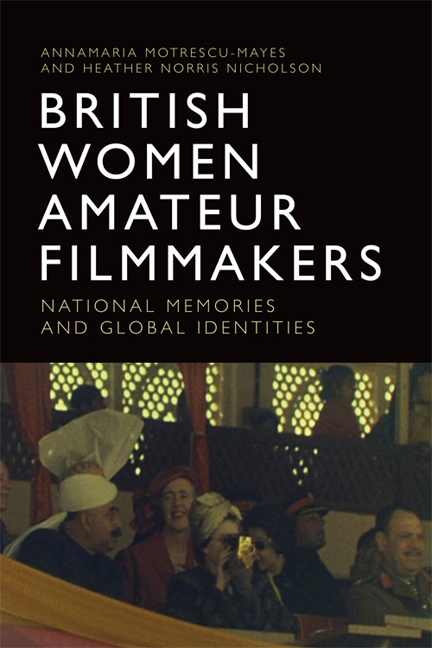Book contents
- Frontmatter
- Contents
- List of Figures
- List of Sources and Abbreviations
- Acknowledgements
- Foreword
- 1 Amateur Women Filmmakers as Producers of Cultural Meaning
- 2 Webs of Production and Practice
- 3 Resisting Colonial Gendering while Domesticating the Empire
- 4 Cameras Not Handbags: The Essential Accessory
- 5 Through Women's Lens: Imperial and Postcolonial Class and Gender Hierarchies
- 6 Teacher Filmmakers
- 7 British Women's Media Narratives of Gender and Collective Memory
- 8 Reimagining Boundaries: Amateur Animations
- Afterword
- Selected Bibliography
- Index
5 - Through Women's Lens: Imperial and Postcolonial Class and Gender Hierarchies
Published online by Cambridge University Press: 12 November 2019
- Frontmatter
- Contents
- List of Figures
- List of Sources and Abbreviations
- Acknowledgements
- Foreword
- 1 Amateur Women Filmmakers as Producers of Cultural Meaning
- 2 Webs of Production and Practice
- 3 Resisting Colonial Gendering while Domesticating the Empire
- 4 Cameras Not Handbags: The Essential Accessory
- 5 Through Women's Lens: Imperial and Postcolonial Class and Gender Hierarchies
- 6 Teacher Filmmakers
- 7 British Women's Media Narratives of Gender and Collective Memory
- 8 Reimagining Boundaries: Amateur Animations
- Afterword
- Selected Bibliography
- Index
Summary
Chaque discours y reste inégal, à lui-même inadéquat [Each discourse remains uneven, inadequate in itself]. (Derrida 2013: 324)
Issues of authenticity in art are always urgent and often involve gender politics, making any discussion about gender-based visual expressions a worthwhile albeit convoluted challenge. Assigning, recognising and validating the intrinsic originality of a visual record as the unequivocal expression of a recognisable gendered narrative continue to be contested theoretical battlefields. For instance, could it be that a scene from a silent amateur film showing people strolling in a garden indicates through its visual indexicality the gender of the filmmaker? It is possible to prove that such a claim is more than just a precarious exercise in media and perception studies only if the starting point of analysis is not anchored, as perhaps expected, in the study of the filmmaker's choice of framing, editing or overall narrative. The starting point of analysis should then be centred on the meticulous decoding of the visual responses, on the behavioural feedback offered by the people filmed – their context-driven ways of returning the filmmaker's gaze. This is particularly important since recent studies have shown that audiences are prone to appoint ex officio the gender of a visual artist – painter, photographer, filmmaker, sculptor etc. – based primarily on the core themes and details depicted. As noted in Chapter 3, Elizabeth A. Bloomfield has demonstrated that ‘gender role stereotyping along with the gender of the participant affects the symbolism within the artwork that results in the attribution of artwork being created by a male or female artists’ (Bloomfield 2015: iv). Moreover, she proved that learning about gender roles in specific cultural contexts usually leads to stereotypical thinking, and consequently to future genre-role stereotypical representations. One of Bloomfield's revealing examples, and one especially relevant to the discussion of amateur films made by women, is that concerning Jan Steen's painting, Life of Man, made in 1665 (Bloomfield 2015: 33). This is a sumptuously detailed theatre-stage-like image of a prosperous household where each member, old and young, male or female, is busily focusing on their tasks at hand, from preparing oysters for dinner to singing, negotiating, or flirting underneath a golden birdcage and under the gaze of a boy playing with a human skull.
- Type
- Chapter
- Information
- British Women Amateur FilmmakersNational Memories and Global Identities, pp. 110 - 132Publisher: Edinburgh University PressPrint publication year: 2018



